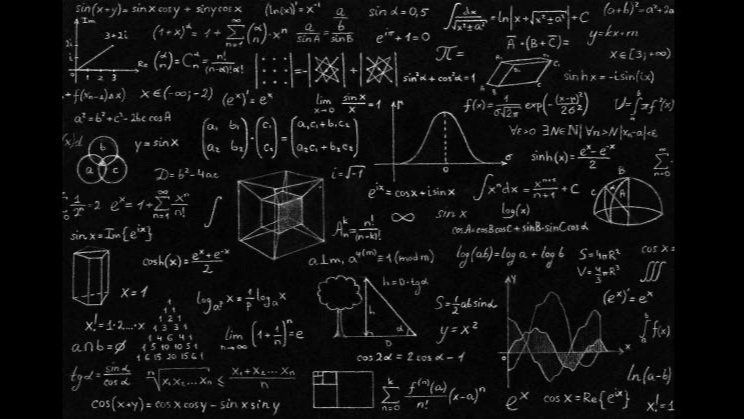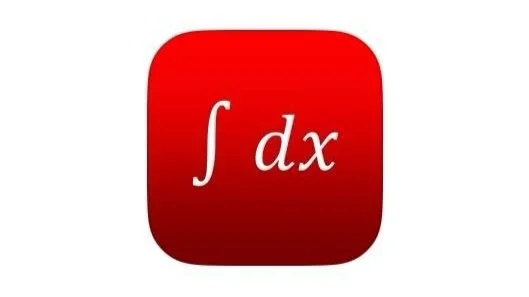
the mathematics
resource bank
(scroll side-to-side for more)
FREE SITES AND APPS
Priced Books, Websites and Apps
free math tools
Additional stuff For Teachers

✺ course resources ✺
(section currently under development)
-
Functions
Functions and Their Graphs:
Domain and Range
Function Notation
Evaluating Functions
Graphing Functions
Transformations of Functions (shifting, stretching, reflecting)
Piecewise Functions
Polynomial Functions:
Polynomial Functions and Their Graphs
End Behavior
Zeros of Polynomial Functions (Real and Complex)
Factorization of Polynomials
Remainder and Factor Theorems
Rational Root Theorem
Fundamental Theorem of Algebra
Rational Functions:
Rational Functions and Their Graphs
Vertical and Horizontal Asymptotes
Oblique Asymptotes
Holes in the Graph
Solving Rational Equations and Inequalities
Exponential and Logarithmic Functions:
Exponential Functions and Their Graphs
Logarithmic Functions and Their Graphs
Properties of Logarithms
Solving Exponential and Logarithmic Equations
Modeling with Exponential and Logarithmic Functions
Trigonometry
Right Triangle Trigonometry:
Trigonometric Ratios (Sine, Cosine, Tangent)
Solving Right Triangles
Applications of Right Triangle Trigonometry
Unit Circle and Radian Measure:
Unit Circle
Radian Measure
Converting Between Degrees and Radians
Trigonometric Functions of Any Angle:
Extending Trigonometric Functions to All Angles
Reference Angles
Trigonometric Identities (Pythagorean, Reciprocal, Quotient)
Graphs of Trigonometric Functions:
Graphing Sine, Cosine, and Tangent Functions
Amplitude, Period, Phase Shift, and Vertical Shift
Inverse Trigonometric Functions
Trigonometric Equations and Identities:
Solving Trigonometric Equations
Verifying Trigonometric Identities
Analytic Geometry
Conic Sections:
Circles
Parabolas
Ellipses
Hyperbolas
Vectors:
Vector Operations (Addition, Subtraction, Scalar Multiplication)
Dot Product
Cross Product
Applications of Vectors (Geometry, Physics)
Matrices:
Matrix Operations (Addition, Subtraction, Multiplication)
Determinants
Inverse Matrices
Solving Systems of Linear Equations Using Matrices
Other Topics
Sequences and Series:
Arithmetic and Geometric Sequences
Series and Summation Notation
Infinite Geometric Series
Limits and Continuity:
Limits of Functions
Continuity of Functions
Asymptotes
Probability and Statistics:
Basic Probability Concepts
Permutations and Combinations
Binomial Probability
Normal Distribution
Polar Coordinates and Complex Numbers:
Polar Coordinates
Complex Numbers
Operations with Complex Numbers (Addition, Subtraction, Multiplication, Division)
De Moivre's Theorem
-
Unit 1: Introduction to Statistics
Data Collection Methods: Surveys, experiments, observational studies
Types of Data: Categorical, numerical (discrete, continuous)
Data Displays: Histograms, box plots, stem-and-leaf plots, scatter plots
Measures of Central Tendency: Mean, median, mode
Measures of Dispersion: Range, quartiles, interquartile range, standard deviation
Unit 2: Probability
Basic Probability Concepts: Sample space, events, probability
Probability Rules: Addition rule, multiplication rule, conditional probability
Independent and Dependent Events: Definitions and calculations
Discrete Random Variables: Probability distributions, expected value, variance
Binomial Distribution: Definition, formula, applications
Unit 3: Normal Distribution
Properties of the Normal Distribution: Bell curve, standard normal distribution
Z-scores: Calculating and interpreting
Normal Distribution Calculations: Finding probabilities, finding values
Normal Approximation to the Binomial Distribution: Conditions, calculations
Unit 4: Inference
Sampling Distributions: Central Limit Theorem
Confidence Intervals: Margin of error, confidence level, interpretation
Hypothesis Testing: Null and alternative hypotheses, p-values, significance level, Type I and Type II errors
One-Sample t-tests: Testing means
Two-Sample t-tests: Comparing means of two populations
Chi-Square Tests: Goodness of fit, test of independence
Unit 5: Regression and Correlation
Scatterplots: Interpreting trends, linear relationships
Correlation Coefficient: Strength and direction of linear relationships
Least Squares Regression: Line of best fit, equation of the line, predictions
Residuals: Analyzing the fit of the model
Additional Topics (Optional):
Simulation
Geometric Distribution
Poisson Distribution
Bayesian Statistics
Time Series Analysis
-
Unit 1: Functions and Limits
Functions:
Definition and notation
Domain and range
Function composition
Inverse functions
Limits:
Intuitive understanding of limits
Limit laws and properties
One-sided limits
Infinite limits
Limits at infinity
Continuity
Unit 2: Derivatives
Definition of the Derivative:
Average rate of change
Instantaneous rate of change
Limit definition of the derivative
Geometric interpretation (tangent lines)
Differentiation Rules:
Power rule
Product rule
Quotient rule
Chain rule
Derivatives of Trigonometric Functions:
Derivatives of sin(x), cos(x), tan(x), sec(x), csc(x), cot(x)
Implicit Differentiation:
Finding derivatives of implicitly defined functions
Unit 3: Applications of Derivatives
Related Rates:
Solving problems involving rates of change
Optimization Problems:
Finding maximum and minimum values of functions
Mean Value Theorem:
Understanding the relationship between the average and instantaneous rates of change
Curve Sketching:
Using derivatives to analyze functions and sketch their graphs
Increasing/decreasing intervals
Concavity
Inflection points
Local and global extrema
Unit 4: Integration
Antiderivatives:
The concept of the antiderivative
Indefinite integrals
Basic integration rules (power rule, trigonometric functions)
Definite Integrals:
Riemann sums
Definite integral as the limit of Riemann sums
Fundamental Theorem of Calculus (Part 1 and 2)
Applications of Integration:
Area between curves
Volume of solids of revolution (disk and washer methods)
Unit 5: Additional Topics (Optional)
Exponential and Logarithmic Functions:
Derivatives and integrals of exponential and logarithmic functions
L'Hôpital's Rule:
Evaluating indeterminate forms
Taylor Polynomials and Series:
Approximating functions with polynomials
Differential Equations:
Introduction to differential equations and their solutions
-
Unit 1: Foundations of Integral Calculus
Antiderivatives and Indefinite Integrals:
Definition and notation
Basic integration rules (power rule, constant multiple rule, sum/difference rule)
Integration by substitution (u-substitution)
The Definite Integral:
Riemann sums (left, right, midpoint)
Definite integral as the limit of a Riemann sum
Fundamental Theorem of Calculus (Part 1 and Part 2)
Properties of definite integrals (linearity, additivity, comparison)
Unit 2: Applications of Definite Integrals
Area Between Curves:
Finding areas between two curves
Finding areas bounded by polar curves
Volumes of Solids of Revolution:
Disk method
Washer method
Shell method
Arc Length:
Arc length of a curve in Cartesian coordinates
Arc length of a curve in polar coordinates
Work and Fluid Force:
Work done by a variable force
Fluid force on a submerged plate
Unit 3: Techniques of Integration
Integration by Parts:
Integration by parts formula
Tabular method
Trigonometric Integrals:
Integrals involving powers of sine and cosine
Integrals involving tangent, secant, cotangent, and cosecant
Trigonometric Substitution:
Integrals involving square roots of quadratic expressions
Partial Fraction Decomposition:
Decomposition of rational functions into simpler fractions
Integration of rational functions
Unit 4: Improper Integrals and Numerical Integration
Improper Integrals:
Type 1 improper integrals (infinite limits of integration)
Type 2 improper integrals (discontinuous integrands)
Comparison Test for Improper Integrals
Numerical Integration:
Trapezoidal Rule
Simpson's Rule
Error bounds for numerical integration
Unit 5: Differential Equations
Introduction to Differential Equations:
Definition and classification of differential equations
Slope fields
Separable Differential Equations:
Solving separable differential equations
Initial value problems
Applications of Differential Equations:
Population growth and decay
Newton's Law of Cooling
Mixing problems
Additional Topics (Optional):
Taylor Series and Power Series
Infinite Series
Vector-Valued Functions and Parametric Equations
Polar Coordinates and Vector Calculus
-
Pre-Algebra Skills
Number Sense and Operations
Whole Numbers:
Place value (ones, tens, hundreds, etc.)
Addition and subtraction (single-digit, double-digit, multi-digit)
Multiplication (single-digit by single-digit, single-digit by multi-digit, multi-digit by multi-digit)
Division (short division, long division)
Decimals:
Place value (tenths, hundredths, thousandths, etc.)
Addition and subtraction of decimals
Multiplication and division of decimals
Rounding decimals
Fractions:
Understanding fractions (numerator, denominator)
Equivalent fractions
Simplifying fractions
Adding and subtracting fractions with like and unlike denominators
Multiplying and dividing fractions
Converting between mixed numbers and improper fractions
Integers:
Understanding positive and negative numbers
Comparing and ordering integers
Adding and subtracting integers (number line model, chip model)
Multiplying and dividing integers
Absolute value
Order of Operations:
Understanding PEMDAS (Parentheses, Exponents, Multiplication/Division, Addition/Subtraction)
Applying PEMDAS to solve problems
Algebra Basics
Variables and Expressions:
Understanding variables as unknown quantities
Writing algebraic expressions (e.g., 2x + 5)
Evaluating algebraic expressions (substituting values for variables)
Combining like terms
Using the distributive property
Equations and Inequalities:
Solving one-step equations (addition, subtraction, multiplication, division)
Solving two-step equations
Writing and solving equations from word problems
Understanding inequalities (greater than, less than, greater than or equal to, less than or equal to)
Solving one-step and two-step inequalities
Graphing inequalities on a number line
Ratios, Proportions, and Percents
Ratios and Proportions:
Understanding ratios (part-to-part, part-to-whole)
Writing ratios in different forms (fraction, colon, word form)
Finding equivalent ratios
Solving proportions using cross-multiplication
Percents:
Understanding the concept of percent (per hundred)
Converting between fractions, decimals, and percents
Finding a percent of a number
Finding the percent increase or decrease
Solving percent word problems (e.g., discount, tax, tip)
Geometry Basics
Basic Shapes:
Identifying and classifying shapes (e.g., triangles, quadrilaterals, circles)
Understanding properties of shapes (e.g., sides, angles)
Perimeter and area of rectangles, squares, triangles, parallelograms, and circles
Pythagorean Theorem:
Understanding the Pythagorean Theorem (a² + b² = c²)
Using the Pythagorean Theorem to find missing side lengths in right triangles
Data Analysis and Probability
Data Analysis:
Collecting and organizing data (tables, charts, graphs)
Finding the mean, median, mode, and range of a data set
Interpreting data from graphs (bar graphs, line graphs, pie charts)
Probability:
Understanding probability as the likelihood of an event
Finding the probability of simple events
Experimental probability vs. theoretical probability
Number Systems and Operations
Number Systems:
Natural numbers, whole numbers, integers
Rational numbers (fractions, decimals, percents)
Real numbers (including irrational numbers)
Operations:
Addition, subtraction, multiplication, and division of whole numbers, integers, and rational numbers
Order of operations
Properties of operations (commutative, associative, distributive)
Exponents and Roots:
Exponents and powers
Square roots and cube roots
Scientific notation
Algebra
Variables and Expressions:
Algebraic expressions and their evaluation
Combining like terms
Distributive property
Equations and Inequalities:
One-step and two-step equations
Multi-step equations
Inequalities (solving and graphing)
Functions and Graphs:
Functions and their representations (tables, graphs, equations)
Linear equations and their graphs
Slope-intercept form
Systems of linear equations
Geometry
Basic Geometric Concepts:
Points, lines, line segments, rays, angles
Polygons (triangles, quadrilaterals, etc.)
Circles
Measurement:
Perimeter and area of plane figures
Volume of solids (prisms, cylinders, pyramids, cones)
Pythagorean Theorem
Transformations:
Translations, rotations, reflections
Dilations
Data Analysis and Probability
Data Analysis:
Collecting, organizing, and displaying data (tables, charts, graphs)
Measures of central tendency (mean, median, mode)
Measures of dispersion (range, quartiles, interquartile range)
Probability:
Basic probability concepts
Experimental and theoretical probability
Independent and dependent events
Additional Topics (Optional)
Ratios and Proportions:
Ratios, rates, and unit rates
Solving proportions
Percents:
Percent of a number
Percent increase and decrease
Simple interest
-
1. Foundational Concepts
Real Number System:
Properties of real numbers (commutative, associative, distributive)
Order of operations (PEMDAS/GEMDAS)
Absolute value and its applications
Square roots and radicals
Algebraic Expressions:
Variables and constants
Writing and evaluating expressions
Combining like terms
Distributive property
2. Linear Equations and Inequalities
Solving Equations:
One-step and two-step equations
Multi-step equations
Equations with variables on both sides
Literal equations (solving for a specific variable)
Solving Inequalities:
One-step and two-step inequalities
Multi-step inequalities
Compound inequalities (AND and OR)
Graphing inequalities on a number line
3. Functions and Their Graphs
Introduction to Functions:
Definition of a function
Domain and range
Function notation
Evaluating functions
Linear Functions:
Slope-intercept form (y = mx + b)
Standard form (Ax + By = C)
Point-slope form
Graphing linear equations
Writing linear equations from given information (slope and y-intercept, two points, etc.)
Parallel and perpendicular lines
Linear inequalities (graphing solutions)
Non-Linear Functions:
Absolute value functions
Piecewise functions
Step functions
4. Systems of Equations and Inequalities
Solving Systems of Linear Equations:
Graphing method
Substitution method
Elimination method
Systems of Linear Inequalities:
Graphing systems of inequalities
Identifying solutions to systems of inequalities
5. Polynomials and Factoring
Polynomials:
Adding, subtracting, multiplying polynomials
Degree and leading coefficient
Factoring Polynomials:
Greatest common factor (GCF)
Difference of squares
Trinomial factoring
Factoring by grouping
6. Quadratic Functions and Equations
Quadratic Functions:
Graphing quadratic functions
Vertex form, standard form, and factored form
Axis of symmetry and vertex
Domain and range
Solving Quadratic Equations:
Factoring method
Square root method
Quadratic formula
Completing the square
7. Exponential Functions and Data Analysis
Exponential Functions:
Exponential growth and decay
Graphing exponential functions
Solving exponential equations (basic)
Data Analysis:
Scatter plots
Line of best fit
Correlation and causation
Interpreting data from graphs and tables
Additional Topics (Depending on Curriculum):
Radical Expressions and Equations
Rational Expressions and Equations
Sequences and Series
Matrices and Determinants
-
Fundamental Concepts
Points, Lines, and Planes:
Definitions and properties of points, lines, and planes
Intersection of lines and planes
Collinear and coplanar points
Angles:
Types of angles (acute, obtuse, right, straight)
Angle measurement and classification
Angle pairs (complementary, supplementary, vertical, adjacent)
Angle postulates and theorems (Angle Addition Postulate, Linear Pair Theorem, etc.)
Geometric Proofs and Reasoning
Inductive and Deductive Reasoning:
Distinguishing between inductive and deductive reasoning
Using inductive reasoning to make conjectures
Using deductive reasoning to prove statements
Two-Column Proofs:
Writing formal geometric proofs using a two-column format
Using postulates, theorems, and definitions as reasons
Paragraph Proofs:
Writing informal proofs in paragraph form
Explaining logical reasoning in a clear and concise manner
Transformations
Rigid Transformations:
Translations (slides)
Reflections (flips)
Rotations (turns)
Properties preserved under rigid transformations (distance, angle measure, congruence)
Dilations:
Scale factor and center of dilation
Properties preserved under dilations (angle measure, similarity)
Symmetry:
Line symmetry
Rotational symmetry
Congruence and Similarity
Congruent Figures:
Definition of congruent figures
Congruence postulates and theorems (SSS, SAS, ASA, AAS)
Proving triangles congruent using proofs
Similar Figures:
Definition of similar figures
Similarity postulates and theorems (AA, SAS, SSS)
Finding missing side lengths and angle measures in similar figures
Right Triangles and Trigonometry
Pythagorean Theorem:
Using the Pythagorean Theorem to find missing side lengths in right triangles
Converse of the Pythagorean Theorem
Special Right Triangles:
45-45-90 triangles
30-60-90 triangles
Trigonometric Ratios:
Sine, cosine, and tangent ratios
Using trigonometric ratios to find missing side lengths and angle measures in right triangles
Applications of Trigonometry:
Solving real-world problems involving right triangles (e.g., height of a tree, distance across a lake)
Polygons and Quadrilaterals
Polygons:
Definition of polygons (convex, concave, regular, irregular)
Angle sum theorem for polygons
Interior and exterior angles of polygons
Quadrilaterals:
Properties of parallelograms, rectangles, squares, rhombuses, trapezoids, and kites
Proving quadrilaterals are special types using properties
Circles
Parts of a Circle:
Center, radius, diameter, chord, secant, tangent
Angles and Arcs:
Central angles, inscribed angles, intercepted arcs
Arc length and sector area
Circles and Lines:
Tangent lines and their properties
Secant-tangent and secant-secant theorems
Coordinate Geometry
Distance and Midpoint Formulas:
Finding the distance between two points
Finding the midpoint of a line segment
Equations of Lines:
Slope-intercept form
Point-slope form
Standard form
Graphs of Linear Equations:
Graphing lines using slope-intercept form and point-slope form
Parallel and Perpendicular Lines:
Slopes of parallel and perpendicular lines
Writing equations of parallel and perpendicular lines
Three-Dimensional Geometry
Solid Figures:
Prisms, pyramids, cylinders, cones, spheres
Surface area and volume formulas for solid figures
Cross Sections:
Identifying cross sections of three-dimensional figures
Applications and Problem Solving
Real-World Applications:
Using geometry to solve real-world problems (e.g., architecture, engineering, design)
Proofs and Constructions:
Writing formal and informal proofs
Using geometric constructions (e.g., bisecting an angle, constructing a perpendicular bisector)
Problem-Solving Strategies:
Using problem-solving strategies (e.g., draw a diagram, work backwards, guess and check)
-
Unit 1: Functions
Functions and Their Graphs:
Domain and range
Function notation
Vertical line test
Graphing functions
Transformations of functions (translations, reflections, stretches, shrinks)
Linear Functions:
Slope-intercept form
Point-slope form
Standard form
Parallel and perpendicular lines
Linear inequalities
Systems of Linear Equations and Inequalities:
Solving systems by graphing
Solving systems by substitution
Solving systems by elimination
Systems of linear inequalities
Unit 2: Quadratic Functions
Quadratic Functions and Their Graphs:
Parabolas
Vertex form
Standard form
Axis of symmetry
Vertex
Maximum and minimum values
Solving Quadratic Equations:
Factoring
Square root method
Completing the square
Quadratic formula
Discriminant
Complex Numbers:
Imaginary unit (i)
Operations with complex numbers
Quadratic Inequalities:
Solving quadratic inequalities
Graphing quadratic inequalities
Unit 3: Polynomial Functions
Polynomial Functions and Their Graphs:
Degree of a polynomial
Leading coefficient
End behavior
Zeros of a polynomial
Multiplicity of zeros
Turning points
Polynomial Operations:
Adding, subtracting, multiplying, and dividing polynomials
Synthetic division
Remainder Theorem
Factor Theorem
Factoring Polynomials:
Factoring by grouping
Factoring special products (difference of squares, sum/difference of cubes)
Solving Polynomial Equations:
Using the Rational Root Theorem
Using the Fundamental Theorem of Algebra
Unit 4: Rational Functions
Rational Functions and Their Graphs:
Domain and range
Vertical asymptotes
Horizontal asymptotes
Slant asymptotes
Holes in the graph
Operations with Rational Expressions:
Simplifying rational expressions
Multiplying and dividing rational expressions
Adding and subtracting rational expressions
Solving Rational Equations and Inequalities:
Finding the LCD
Clearing fractions
Solving rational equations
Solving rational inequalities
Unit 5: Exponential and Logarithmic Functions
Exponential Functions:
Exponential growth and decay
Graphing exponential functions
Logarithmic Functions:
Definition of a logarithm
Properties of logarithms
Solving logarithmic equations
Graphing logarithmic functions
Exponential and Logarithmic Equations and Inequalities:
Solving exponential equations
Solving logarithmic equations
Solving exponential and logarithmic inequalities
Unit 6: Conic Sections
Circles:
Equation of a circle
Graphing circles
Parabolas:
Standard form and vertex form
Graphing parabolas
Ellipses:
Standard form
Graphing ellipses
Hyperbolas:
Standard form
Graphing hyperbolas
Unit 7: Sequences and Series
Sequences and Series:
Arithmetic sequences and series
Geometric sequences and series
Infinite geometric series
Sigma notation
Binomial Theorem:
Binomial expansion
Pascal's Triangle
Unit 8: Data Analysis and Probability
Data Analysis:
Measures of central tendency and dispersion
Box plots
Histograms
Scatter plots
Correlation and regression
Probability:
Basic probability
Conditional probability
Independent and dependent events
Binomial probability
Unit 9: Trigonometry
Trigonometric Functions:
Right triangle trigonometry
Unit circle
Trigonometric identities
Graphing trigonometric functions
Trigonometric Equations and Identities:
Solving trigonometric equations
Verifying trigonometric identities

✺ Asked questions ✺
-
Nope! The Mathematics Resource Bank is simply a collection of quality tools I’ve gathered to save students and teachers time and effort so the focus stays on teaching and learning.
-
Not sure which tools best explain your topic? I’m happy to assist, just click the button below!
Have a question?
Need some guidance?
Know a good resource?



















